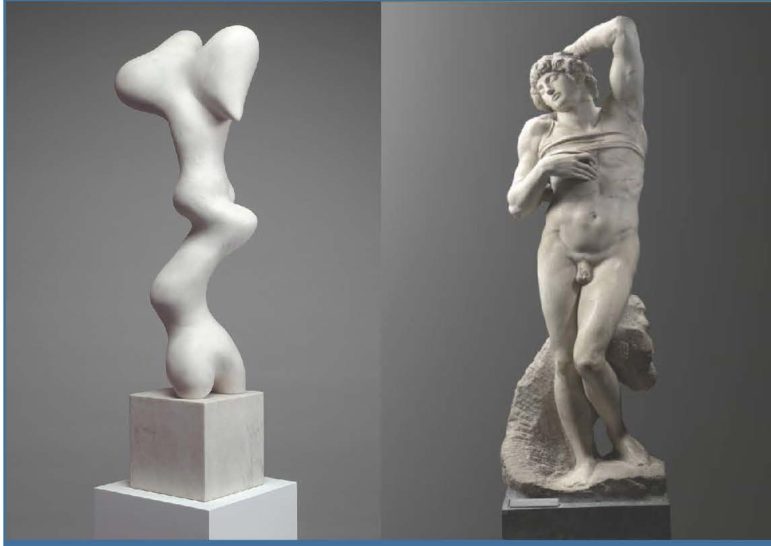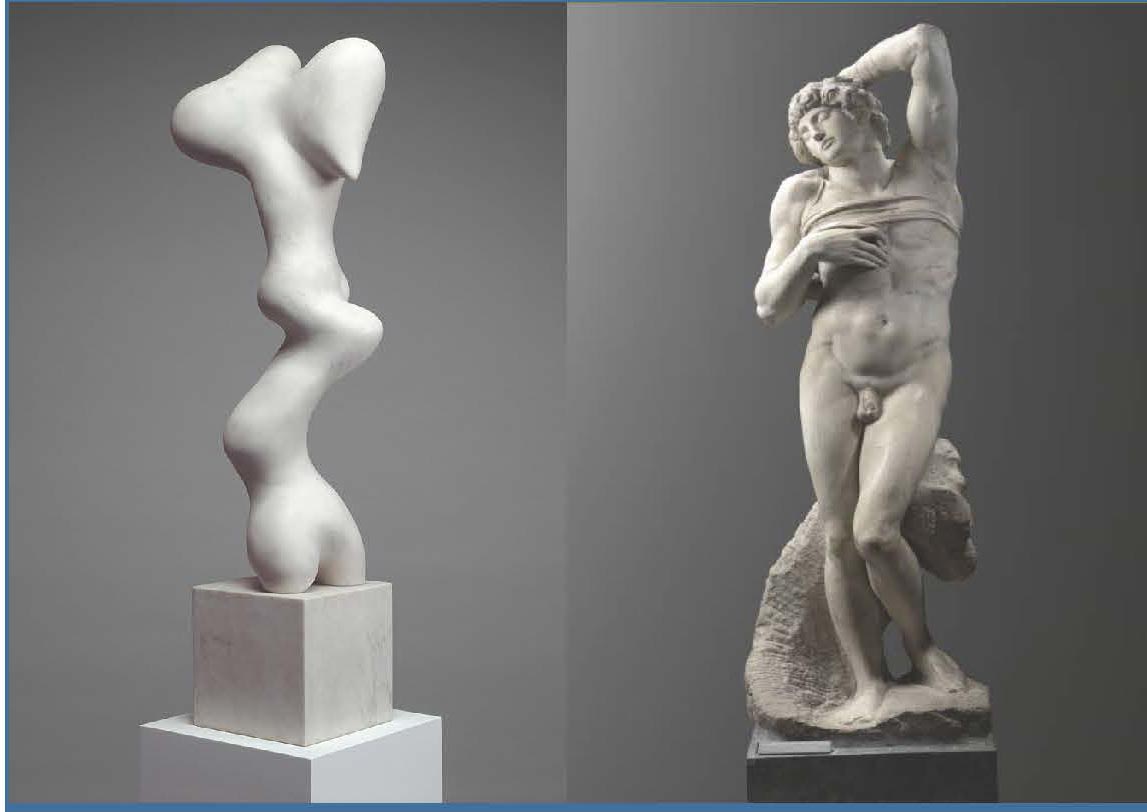Darien Community Association’s annual Art Lecture Series this year is The Art of Looking presented by Lance Esplund, art critic for The Wall Street Journal.
— an announcement from the Darien Community Association
On four Thursdays in October, Esplund will present the lecture series based on his book, “The Art of Looking: How to Read Modern and Contemporary Art.”
The Oct. 3, 10, 17 and 24 lectures begin promptly at 11 a.m., with luncheons to follow.
Drawing on his experience beginning as an artist, becoming an award winning teacher in the classroom and now as acute observer in national media of art exhibitions in the United States, Esplund will be sharing his insights of interpretation to allow integration of the viewer’s understanding of both modern and contemporary art with what has preceded it — the ballast of art history.

Left: Growth (1938) Jean Arp (French German 1886-1966). Marble. 31 5/8 in. tall. Solomon R. Guggenheim Museum, NY. Right: Dying Slave (1513-16) Michelangelo (Italian 1475-1564). Marble. 84 41/64 in. tall. Musée du Louvre, Paris, France.
This connectivity of what can seem to be wholly different ideas in their various presentations and mediums are in fact, in constant dialogue with one another.
 The modern Jean Arp figural sculpture, “Growth,” created in 1938, knows it is within the continuum of Michelangelo’s extraordinary Dying Slave, also carved out of white marble but in the 16th century.
The modern Jean Arp figural sculpture, “Growth,” created in 1938, knows it is within the continuum of Michelangelo’s extraordinary Dying Slave, also carved out of white marble but in the 16th century.
The French artist’s modern abstracted forms help us to more fully grasp the magnificence of the details and sensuous tenderness expressed by the Italian master.
This conversation between artworks across centuries is examined throughout the lecture series to develop a framework for understanding that allows reintegration for the viewer to fully appreciate both the art of the past and the challenging premises of the art emerging out of the artist’s studio today.
The DCA’s 2019 Art Lecture Series Sponsor is Laurel Road Bank.
If You’re Going …
- All lectures will be followed by a luncheon specially designed by Diane Browne Catering.
- Series admission, including four lectures with gourmet luncheons, is $175 for DCA members, or $205 for public. Single lecture with luncheon admission is $50 for DCA members, or $65 for public.
- Prepayment is required for all lunch reservations by noon on the Friday preceding each lecture. Lecture only (without luncheon) is $20 for DCA members, or $30 for public.
- Walk-ins welcome for lecture only, however, it is recommended that reservations and payment be made 24 hours in advance to assure a seat. Register online through dariendca.org, or contact the DCA directly at info@dariendca.org or 203-655-9050 extension 10.
- The DCA is located at 274 Middlesex Road in Darien, CT. Please visit dariendca.org for more info about the DCA Art Lecture Series.
First Lecture: Thursday, Oct 3
In his first lecture on Thursday, Oct. 3, Esplund says, “We will explore how art is in dialogue with other art; how the art of the past can open us up to the art of the present — and vice-versa. Fine tuning our eyes, hearts, and minds will empower us to trust our own taste, guts, and common sense…We will begin to think like artists…” The foundational premise of inquiry will start with “The Language of Art.”
“Art is an evolving language … (that) has taken on an almost infinite range of subjects, materials, and forms, the elements and language of art remain basically unchanged.
Contemporary artists today use the same elements and vocabulary (form, tension, rhythm, line, movement, space, color, metaphor) as ancient artists. Gaining some fluency in the universal language of art … grants viewers access not only to one artwork but to the whole world of art.”
Through the interactive process of teaching he employs with his audience, what was previously obtuse, seemingly irrelevant and unintelligible comes into greater focus and meaning, while a reexamination of a 15th century oil on panel of Christ on the Cross, is revealed to be the revolutionary work of art that it was when it was made —and still is, communicating to us across centuries.
Using examples as seemingly disparate as 20th century Surrealist movement works influenced by the otherworldly fantasies of the Netherlandish painter Hieronymus Bosch (1450-1516) or the angular elongations in the work of the Spanish painter El Greco (1541-1614) which continue in the work of Modern movement Expressionist and Cubist paintings, Lance Esplund is what we need now to develop our own capacities as critics to move through galleries of the historical past and the new now with a fuller appreciation of the continuum of art across millennia.

